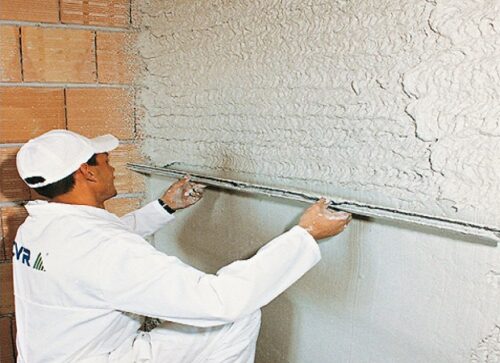MEANING AND DIFFERENCE BETWEEN GYPSUM PLASTER AND CEMENT PLASTER
Plastering is an essential part of construction, used to create a smooth and even surface on walls and ceilings. There are various types of plaster, including gypsum and cement plaster, each with its own set of advantages and disadvantages. In this article, we will explore the differences between gypsum plaster and cement plaster and the benefits of each.
What Is Gypsum Plaster?
Gypsum plaster, also known as plaster of Paris, is a type of plaster made from the mineral gypsum. Gypsum is a soft sulfate mineral that is commonly found in sedimentary rocks. It is widely used in construction due to its ability to harden when mixed with water. Gypsum plaster is a popular choice for interior walls and ceilings due to its smooth finish and ability to dry quickly.
Advantages of Gypsum Plaster
- Easy to Apply: Gypsum plaster is easy to apply and requires less time and effort than cement plaster.
- Smooth Finish: Gypsum plaster creates a smooth and even finish, making it an excellent choice for interior walls and ceilings.
- Quick Drying: Gypsum plaster dries quickly, allowing for faster completion of construction projects.
- Fire-Resistant: Gypsum plaster is fire-resistant, making it a safer choice for construction projects.
Disadvantages of Gypsum Plaster
- Not Suitable for Exterior Use: Gypsum plaster is not suitable for exterior use as it is not water-resistant.
- Fragile: Gypsum plaster is relatively fragile and can be easily damaged if not handled carefully.
- Requires Skilled Labor: Gypsum plaster requires skilled labor for application, which can increase the cost of construction projects.
What Is Cement Plaster?
Cement plaster, also known as cement mortar, is a type of plaster made from a mixture of cement, sand, and water. Cement plaster is commonly used for both interior and exterior walls due to its durability and water-resistant properties.
Advantages of Cement Plaster
- Durable: Cement plaster is highly durable and can withstand harsh weather conditions.
- Water-Resistant: Cement plaster is water-resistant, making it an excellent choice for exterior walls.
- Versatile: Cement plaster can be used for both interior and exterior walls and can be painted or textured.
- Affordable: Cement plaster is relatively inexpensive compared to other types of plaster.
Disadvantages of Cement Plaster
- Time-Consuming: Cement plaster takes longer to apply and dry than gypsum plaster, which can increase the time and cost of construction projects.
- Prone to Cracking: Cement plaster is prone to cracking if not applied correctly or if the wall or ceiling moves.
- Rough Finish: Cement plaster can create a rough finish, which may not be suitable for interior walls and ceilings.
Conclusion
In conclusion, both gypsum plaster and cement plaster have their advantages and disadvantages. Gypsum plaster is easy to apply, creates a smooth finish, and dries quickly, making it an excellent choice for interior walls and ceilings. Cement plaster, on the other hand, is durable, water-resistant, and versatile, making it an excellent choice for both interior and exterior walls. The choice of plaster depends on the specific needs of the construction project, and it is essential to consult with a professional before making a decision.


